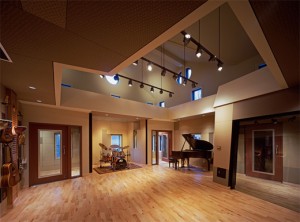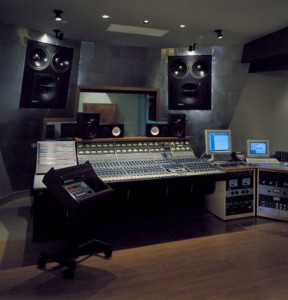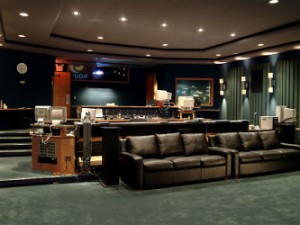Op-Ed: And Another One Gone – What We Lose When Studios Close
It’s part of the cycle of life that things have a life and then move on. So it happens with studios, many of which we have come to enjoy working in. With the recent closing of BiCoastal Music I find myself reflecting.
My first studio was Mediasound on west 57th Street in Manhattan. Starting out it was a great opportunity to learn from world class people as they made records and national jingles.
Part of what made a studio like Mediasound a great place for them to work in was the environment and the staff. There were dedicated assistants and the people in the production office often knew what you needed on your session before you had time to mention it. The maintenance team was world class, and beyond fixing gear they were often building new pieces.
The studio in the mid 80’s had two Neve consoles (also a Harrison and a Trident) and Studio A (the original West 57th Street Baptist Mission church) was a great tracking space. The collection of mics was extensive and you had a few flavors of tape to choose from.
Owning a studio was a risky venture back then, and it’s only gotten harder to make ends meet in today’s environment. While our digital toolbox has grown tremendously, studios today present fewer options on the capture side and rely more on the fix-it-in the box mentality.
The Workings of World-Class Spaces
In David Weiss’ recent article interviewing Hal Winer, owner of BiCoastal Music, Hal states, “Unfortunately, if you’re in this business to make money as a commercial studio owner, there’s almost no justification for building a world-class space because the budgets as they are now won’t support it.”
Modern budgets don’t allow for the large support staff any longer, but BiCoastal was a world class studio that in many ways surpassed the grand old studios in what it had to offer as a facility. Modern treatments and construction techniques under the direction of Russ Berger made for a large, open, airy feel that sounded spot on. Acoustically the room provided various tight and roomy-sounding spaces within the main studio space and three iso areas with great line of sight. Monitoring was accessed by individual 16-channel mixers. The gear was all world class and it was located in a rural setting that leant itself to being focused yet relaxed.
What do you do when you get stuck for ideas? Whenever I have worked in a multi-room facility I’ve always hung out for a bit with people from other sessions. Along the way I have picked up insights, ideas, and inspiration. Once in a while I even picked up some great side musicians that were needed for the project I was working on. The whole scene just made you want to go back to your room and be creative!
Today I see people bringing their laptops to one guy’s home rig and sharing ideas, but they are all working on the same project. Differences sometimes make, well, the difference. I have been inspired by an R&B project while making a retro rock EP, by a hip hop project while mixing a singer/songwriter, and re-amped an ill-fitting collection of drum samples through a Fender Twin for a hip hop mix I did.
So now we have it all in our computers and we have emulations of all that expensive gear. Why do we need the big high-end studio with its expensive price tag? What are we losing anyway?
If you are making a record that is what I call “production music” (virtual instruments and a vocal mic), you have no need for a dedicated studio other than ego. Unless of course you take into account all the support staff that made it possible for the artists, producers, and engineers to focus on their craft.
Of course if you are in a group that features live music, you have a whole different set of concerns.
Big Room ROI
There are many things about record-making I am willing to admit I can be flexible about. The fact that band records are more exciting when the rhythm tracks are tracked together is not one of them! There is no quicker way to suck the life out of a track then by recording the instruments separately. The studio therefore needs to be of a size that will allow for all the musicians to be setup with enough isolation, and still maintaining good lines of sight amongst the players.
I once read an interview with T-Bone Burnett where he stressed the importance of how what you are going to record needs to sound good in the room you record in. Well he is dead right – it’s becoming harder and harder these days to find these rooms that just work as a good-sounding space.
Artists may feel that the expense of these rooms is out of their reach, but when you add up all the time spent piece-mealing the rhythm section track by track (to say nothing of trying to fix tracking issues in the mix) is it really that expensive?
When I work with a band we rehearse until we have all the parts and tempos worked out. When we track, we can lay down an album worth of basic tracks in 2-3 days. After that, the home studio might be perfect for overdubs, but first we had access to a great-sounding space and mics, along with processing gear beyond most artists’ ability to assemble. I’d say that’s great return on investment.
Collaborative Continuity
These types of rooms were a great training ground when I was coming up. Sure you can find a lot of information (and some disinformation) on the Web, but nothing beats sitting in the room and watching what people do, both good and bad.
Coming up, I could compare rare tube mics or versions of ribbon mics and learn how to create a desired sound. If there was downtime we all tried to get in there and experiment. It was magical and it inspired us.
My hope is that as some of us discuss these aspects of studio life, it will inspire the next generation of engineers to reach out and share ideas with their colleagues. Perhaps they will find a way to retain the spirit of those studio days.
Working at BiCoastal Music was inspiring and I will truly miss working there and the opportunity to collaborate with its owner Hal Winer, who loves making records with a passion, as do the many people I have met through the studio. Good luck to Hal, and good luck to us all as we boldly venture out into the new world of record making.
Please note: When you buy products through links on this page, we may earn an affiliate commission.










Kaya_Bailey
October 3, 2013 at 3:51 pm (12 years ago)Well stated and heart wrenching especially as a Studio owner and Engineer in these changing times.
Rick Slater
October 4, 2013 at 5:51 am (12 years ago)Hi Kaya, What type of strategies are you employing to attract business to your studio? Do you focus on what the studio can offer and the return on investment of the money spent utilizing a commercial facility?
K-Wash
October 7, 2013 at 4:13 pm (12 years ago)i work on the Neve console still and an SSL 4000,but i do understand about the in-the-box thing.It’s crazy,but has it’s perks like all things.i’m 18 by the way haha
Rob
October 10, 2013 at 9:19 am (12 years ago)I’ve been in the biz long enough to know how to align a 2″-24 track deck. I used to work at a world-class facility in upstate NY. I watched as ADAT’s and Pro Tools changed the world of music. I really have mixed feelings about the change as I am also a musician and composer. Sure it sucked watching our music clients trickle down to next to nothing but we compensated by going after commercial and audio for video clients which saved the place. And now that’s a primary money maker for my home studio. I have a fantastic vocal channel, a properly designed space, good monitors….and Pro Tools. That’s all I need to do the work that pays the bills. And my musician/composer self can write, record and mix in the comfort of my own space which is attached to my house. If I need acoustic drums I call my buddy who has built a studio just for that. I send him a file, he plays his tracks on custom drums, recording with awesome mics and pres, and FTP’s them back to me to mix. Times have changed. And yes I miss sitting behind a 20 foot long console with racks of outboard gear to play with. But I appreciate the opportunity to get similar results on gear that didn’t cost as much as my house. Now…there’s a point I need to make…I am an experienced ENGINEER and MUSICIAN. I know how to use the tools to make proper mixes. Those same tools in the untrained hands rarely produce decent results. And don’t get me started on the musical laziness that has occurred since now everything can be fixed! Same thing has happened in the video industry. YouTube is slowly lowering the standards of acceptable video making it increasingly difficult to be a professional in that industry. The music industry has been on that downward spiral for 20 years. The closing of the major studios is the final result of this shift.
Justin
October 10, 2013 at 5:07 pm (12 years ago)i’m a musician and songwriter, who’s had out of necessity to build skills in mixing, production and mastering in order to deliver professional results to clients. all i can say is — to any despairing studio owner out there reading this article — please, please, please try to stay afloat. the “all electronic” approach to American pop music is already seeing signs of fatigue, and bland as they are, a band like Mumford & Sons requires the consoles, gear, mics, and rooms of a world-class studio. please do what you have to do. don’t give up. we need you.